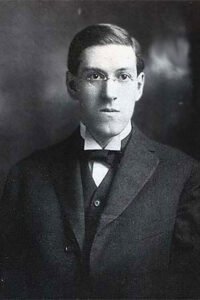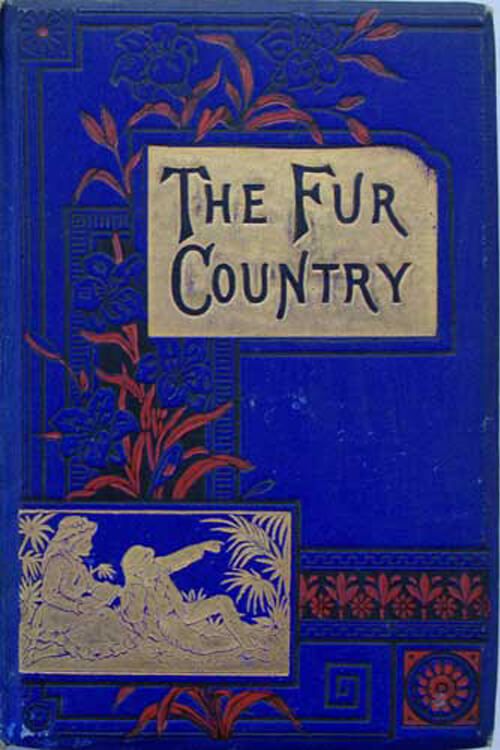
The Dreams in the Witch-House
Elwood could not imagine what had set these superstitious creatures gossiping but supposed their imaginations had been roused by Gilman’s late hours and somnolent walking and talking on the one hand and by the nearness of traditionally feared May Eve on the other hand. That Gilman talked in his sleep was plain, and it was obviously from Desrochers’ keyhole listenings that the delusive notion of the violet dream-light had got abroad. These simple people were quick to imagine they had seen any odd thing they had heard about. As for a plan of action—Gilman had better move down to Elwood’s room and avoid sleeping alone. Elwood would, if awake, rouse him whenever he began to talk or rise in his sleep. Very soon, too, he must see the specialist. Meanwhile, they would take the spiky image to the various museums and certain professors, seeking identification and stating that it had been found in a public rubbish can. Also, Dombrowski must attend to the poisoning of those rats in the walls.
Braced up by Elwood’s companionship, Gilman attended classes that day. Strange urges still tugged at him, but he could sidetrack them with considerable success. During a free period, he showed the queer image to several professors, all of whom were intensely interested, though none of them could shed any light upon its nature or origin. That night, he slept on a couch that Elwood had had the landlord bring to the second-story room and was wholly free from disquieting dreams for the first time in weeks. But the feverishness still hung on, and the whines of the loom-fixer were an unnerving influence.
During the next few days, Gilman enjoyed an almost perfect immunity from morbid manifestations. He had, Elwood said, shown no tendency to talk or rise in his sleep, and meanwhile, the landlord was putting rat poison everywhere. The only disturbing element was the talk among the superstitious foreigners, whose imaginations had become highly excited. Mazurewicz was always trying to make him get a crucifix and finally forced one upon him, which he said had been blessed by the good Father Iwanicki. Desrochers had something to say; in fact, he insisted that cautious steps had sounded in the now vacant room above him on the first and second nights of Gilinan’s absence from it. Paul Choynski thought he heard sounds in the halls and on the stairs at night and claimed that his door had been softly tried, while Mrs Dombrowski vowed she had seen Brown Jenkin for the first time since All-Hallows. But such na�ve reports could mean very little, and Gilman let the cheap metal crucifix hang idly from a knob on his host’s dresser.
Read or download Book
H. P. Lovecraft
Howard Phillips Lovecraft (August 20, 1890 – March 15, 1937) was an American writer of weird, science, fantasy, and horror fiction. He is best known for his creation of the Cthulhu Mythos.
Biography.
Born in Providence, Rhode Island, Lovecraft spent most of his life in New England. After his father’s institutionalization in 1893, he lived affluently until his family’s wealth dissipated after the death of his grandfather. Lovecraft then lived with his mother, in reduced financial security, until her institutionalization in 1919. He began to write essays for the United Amateur Press Association, and in 1913, wrote a critical letter to a pulp magazine that ultimately led to his involvement in pulp fiction. He became active in the speculative fiction community and was published in several pulp magazines. Lovecraft moved to New York City, marrying Sonia Greene in 1924, and later became the centre of a wider group of authors known as the “Lovecraft Circle”. They introduced him to Weird Tales, which would become his most prominent publisher. Lovecraft’s time in New York took a toll on his mental state and financial conditions. He returned to Providence in 1926 and produced some of his most famous works, including The Call of Cthulhu, At the Mountains of Madness, The Shadow over Innsmouth, and The Shadow Out of Time. He would remain active as a writer for 11 years until his death from intestinal cancer at the age of 46.
Lovecraft’s literary corpus is based on the idea of cosmicism, which was simultaneously his philosophy and the central theme of his fiction. Cosmicism posits that humanity is an insignificant part of the cosmos and could be swept away at any moment. He incorporated fantasy and science fiction elements into his stories, representing the perceived fragility of anthropocentrism. This was tied to his ambivalent views on knowledge. His works were primarily set in a fictionalized version of New England. Civilizational decline also plays a significant role in his works, as he believed that the West was in decline during his lifetime. Lovecraft’s early political views were conservative and traditionalist; additionally, he held many racist opinions for much of his adult life. Following the Great Depression, Lovecraft’s political views became more socialist while remaining elitist and aristocratic.
Throughout his adult life, Lovecraft could never support himself from his earnings as an author and editor. He was virtually unknown during his lifetime and was almost exclusively published in pulp magazines before his death. A scholarly revival of Lovecraft’s work began in the 1970s, and he is now regarded as one of the most significant 20th-century authors of supernatural horror fiction. Many direct adaptations and spiritual successors followed. Works inspired by Lovecraft, adaptations or original works, began to form the basis of the Cthulhu Mythos, which utilizes Lovecraft’s characters, setting, and themes.






